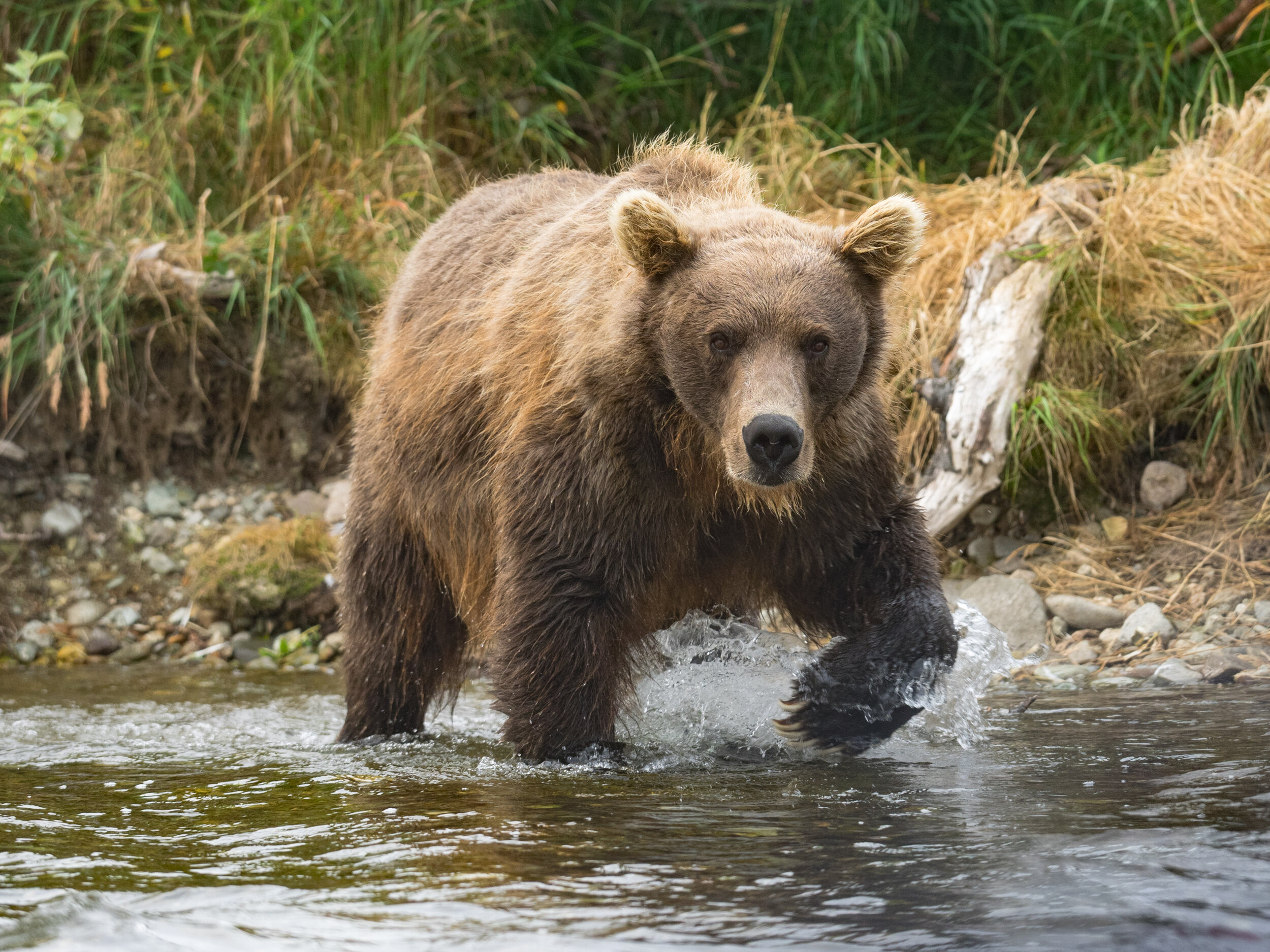Keystone Predator: Grizzly Bears
Quick Facts
Bears and wolves evolved together and share common habitats; they do not attack each other and do not compete for the same foods.
Bears and wolves are essential for our ecosystems.
In the early 19th century, 50,000 – 100,000 grizzly bears lived in much of the American West, from the Pacific Ocean to the Great Plains.
On average, two people are killed every year by bears in North America.
Every year, hundreds of grizzly bears are killed by hunting (both legal and illegal), trains and cars. An exact number is difficult to determine due to lack of official data on illegal poaching.
There are no restrictions for individuals to own bears in six states, and it is legal with a permit in another eight states.
There are only seven confirmed incidents of grizzly bears killing humans in Yellowstone National Park since the park was established in 1872.
A Grizzly Persecution
Grizzly bears once roamed the American West in large numbers. In fact, the iconic animal is the official state animal of California, despite the fact that there have not been wild grizzlies in California for nearly 100 years. Many Native American tribes revered and respected the enormous bears. But when Lewis and Clark documented their famous expedition, accounts of the “very large and terrible animal” are what became known to the many settlers that followed. In the 1800s, as more of America’s wild lands were converted to livestock pastures, grizzlies were viciously hunted with rifles, steel traps and poison. Government incentives made grizzly bear hunting even more popular. As the intelligent bears retreated into the mountains to avoid humans, they were continually persecuted. By the 1950’s less than 1,000 grizzlies remained in the lower 48 states, in only two percent of their former range.
As a keystone species, grizzly bears have a positive effect on the ecosystems where they thrive. They regulate healthy populations of the animals they prey on, such as elk and moose, and keep forests healthy by dispersing seeds and berries through their feces. Grizzly bears are also known to catch salmon and bring their meals into the forest. The salmon carcasses serve as fertilizer and help trees grow strong and healthy.


